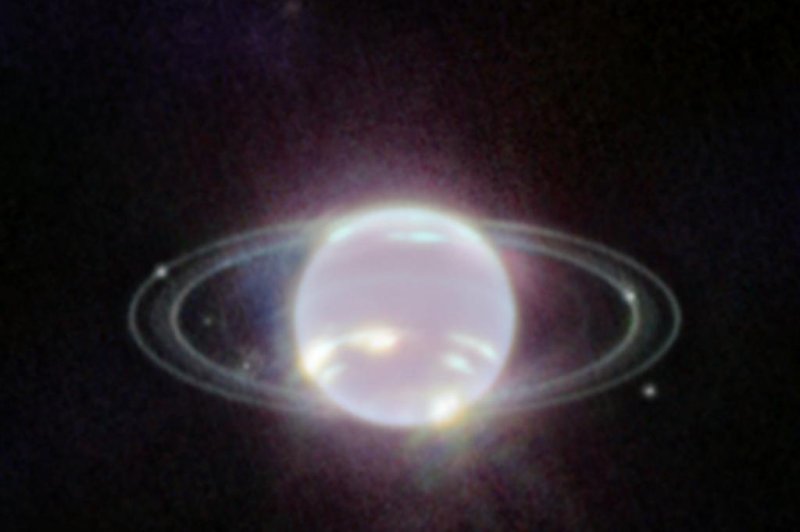1 of 4 | NASA’s James Webb Space Telescope has sent back its first images of Neptune, the clearest photos of the eighth planet from the sun’s rings in more than 30 years, which were released on Thursday. Photo courtesy of NASA
Sept. 22 (UPI) -- NASA's James Webb Space Telescope has sent back its first images of Neptune, the clearest photos of the eighth planet from the sun's rings in more than 30 years, the space agency said Thursday.
The new images give a "crisp" view of the ice giant planet's rings, NASA said in a news release.
Some of those rings have not been detected since NASA's Voyager 2 became the first spacecraft to observe Neptune in 1989.
The Webb also shows the planet's fainter dust bands.
"It has been three decades since we last saw these faint, dusty rings, and this is the first time we've seen them in the infrared," James Webb interdisciplinary scientist Heidi Hammel said in a statement, praising the telescope's extremely stable and precise image quality.
Scientists have been limited to using ground-based telescopes to keep a close watch on the gaseous planet's temperatures.
The Webb images come as NASA troubleshoots a problem with the $10 billion deep space telescope. Scientists confirmed on Wednesday they temporarily paused further observations with the telescope after a problem was detected with one of its Mid-Infrared Instrument settings.
Neptune was first discovered in 1846, located 30 times farther from the sun than Earth. It is one of two planets in our solar system referred to by scientists as an ice giant, the other being Uranus.
The Webb telescope also captured images of seven of Neptune's 14 known moons.
NASA's James Webb Space Telescope captures a fiery hourglass of light. This cloud of dust and gas is illuminated by light from a protostar, a star in the earliest stages of formation. Photo courtesy of NASA
















